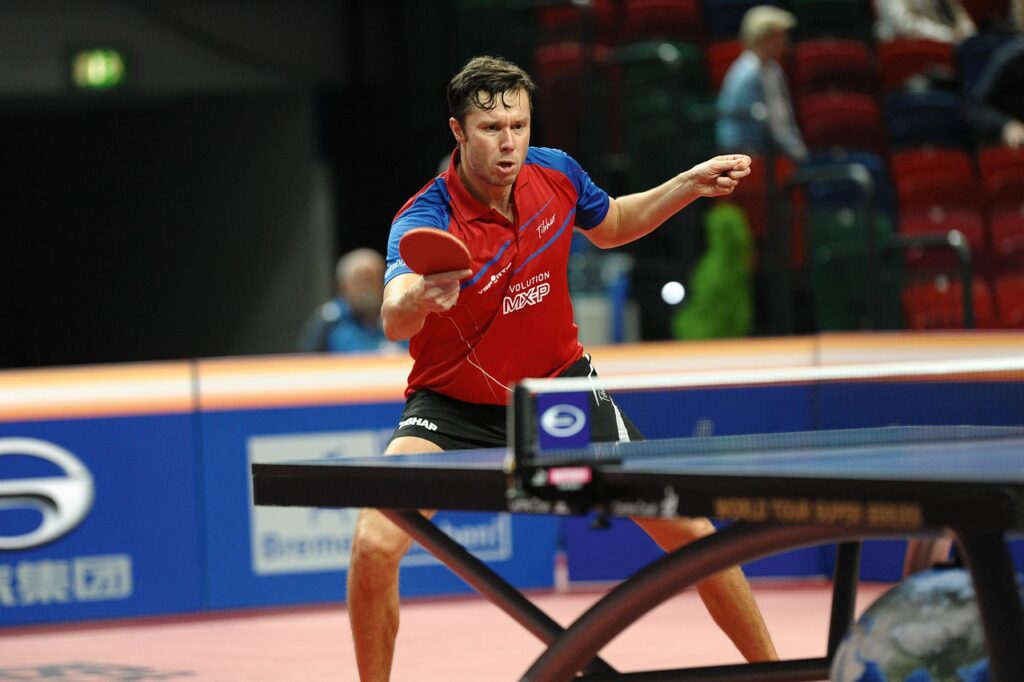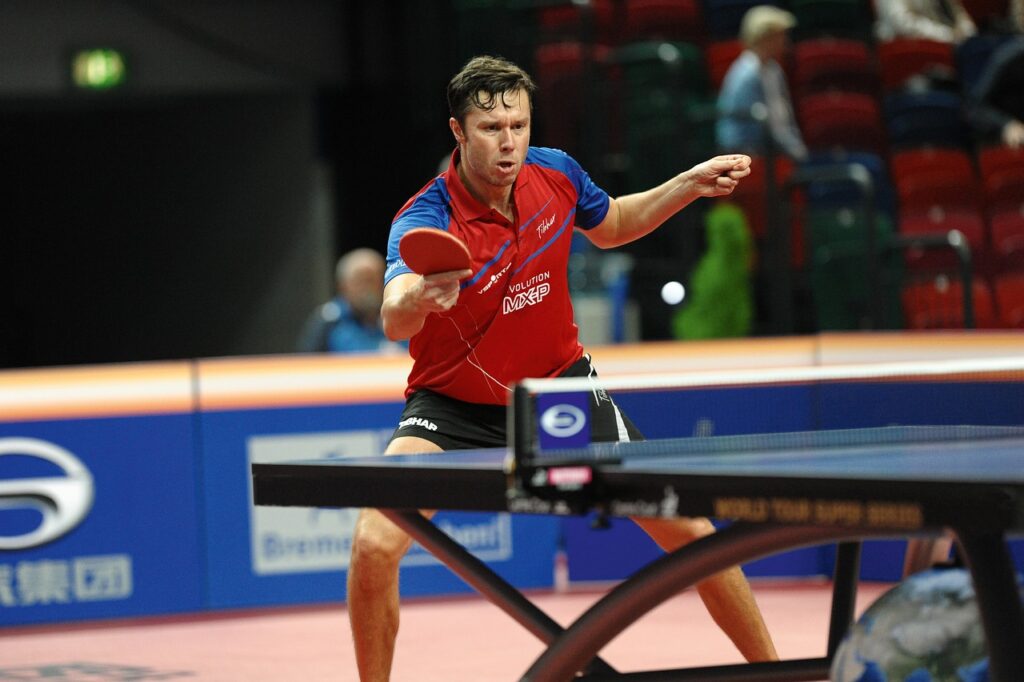The true essence of sports is not just in records and medals. It’s about passion, the fervor that accepts every challenge life throws and breaks through every limitation. Wheelchair Tennis Paralympics embodies this essence—a story where players win hearts not just with their performance, but with their journeys.
This sport tests not just physical strength, but mental toughness too. Every serve, every volley is a lesson in how determination and resilience can win any match in life.

History of Wheelchair Tennis Paralympics: A Dream Written in Stories
Wheelchair tennis began humbly but has now become a shining star of the Paralympics. It was officially introduced at the 1988 Seoul Paralympics. Since then, wheelchair tennis has not only achieved the status of a sport but has become a source of inspiration.
The beauty of this game lies in the fact that skill and power alone are not enough; you need patience and a never-give-up attitude. This is not just a game of rackets and balls, but a revolution that shows physical challenges can’t stop life’s journey.
Format of Wheelchair Tennis: The Power of Game Rules and Inclusivity
The format of wheelchair tennis differs slightly from traditional tennis, but the spirit is just as strong. Players move around the court with their wheelchairs, and the two-bounce rule is a unique feature of this sport.

Brief Overview of Rules
- Two-Bounce Rule: Players are allowed two bounces before hitting the ball, the first of which must be within the court.
- Wheelchair Mobility: Players maintain agility and speed using their wheelchairs. Strategy and positioning become even more important.
- Classification: There are two categories—Open Class and Quad Class. Quad Class is for athletes with limited upper and lower body movements.
These rules exemplify inclusivity, making wheelchair tennis not just a sport but an equal platform.
Legends of Wheelchair Tennis: Icons Who Changed the Game
Every sport is defined by its legends, and wheelchair tennis is no exception. Some icons have inspired people worldwide with their stories.
- Shingo Kunieda (Japan): A living legend in wheelchair tennis, Shingo is a multiple Paralympic gold medalist and Grand Slam winner. His gameplay is marked by unmatched balance and precision. He believes, “Winning is not just about medals; it’s about proving to yourself that you are stronger than your doubts.”
- Esther Vergeer (Netherlands): Known as the queen of wheelchair tennis, Esther won 470 matches in her career, an unbeatable record. Her journey shows how a focused mind and dedicated heart can make the impossible possible.
- Dylan Alcott (Australia): Famous for his dominance in the Quad Class, Dylan is a multiple gold medalist at the Paralympics and a motivational speaker. His message is clear: “Your limits are defined by your will, not your wheelchair.”
India and Wheelchair Tennis: A New Hope
For India, wheelchair tennis is an emerging sport with a strong foundation. Players like Prathima Rao and Harry Boniface Prabhu are working hard to take this game to the grassroots level.
India’s Future Potential
Paralympic medals in wheelchair tennis are a dream for India, but the day is not far when the Indian tricolor will fly high on the court. With improved facilities and awareness, Indian athletes are ready to make an impact on the global stage.

Wheelchair Tennis in Paralympics: A Cultural Festival
Paralympics is not just a sporting event; it’s a celebration of human potential. The energy and passion seen in wheelchair tennis matches can rival any traditional sporting event. Fans come to the stadium not just to cheer for their team but to salute the spirit of these athletes.
The chants, the sound of the ball hitting the racket, and the crowd clapping in unison create an electrifying atmosphere. The matches bring a unique level of emotion where every point is a win, and every rally is a story.
Challenges and Resilience: The Essence of Players’ Journeys
The lives of wheelchair tennis athletes are not limited to the court. Their daily routines, filled with struggles and challenges, showcase their true strength.
- Physical Challenges: Consistency amidst injuries and recovery is their daily battle.
- Mental Toughness: Every match involves fighting not just the opponent but also their own doubts. Their mental focus pushes them beyond their limits.
- Lack of Facilities: For athletes in developing countries, accessible infrastructure and high-level coaching remain constant struggles.
Despite these challenges, wheelchair tennis players prove with their passion that determination can overcome any hurdle.
Future of Wheelchair Tennis: A New Flight
With advancements in technology and innovation, the future of wheelchair tennis looks even brighter. Advanced, lightweight, and fast wheelchairs are enhancing player performance.
Grassroots initiatives are helping discover and train new talent. As the global reach of wheelchair tennis expands, the sport is becoming a platform for athletes from every continent.

The Message of Inclusion
The future of wheelchair tennis is not just about medals and records but about a larger message—that inclusivity and equality should be the soul of every sporting arena.
The Essence of Wheelchair Tennis: Lessons Beyond the Court
Wheelchair tennis teaches us a simple yet powerful lesson: you lose only when you stop chasing your dreams. Paralympic athletes don’t just play a sport; they motivate us in every aspect of life.
Every point on the court is a story—a rally of self-belief, a smash of hope, and a win of strength.
Conclusion: An Unwavering Passion
Wheelchair Tennis Paralympics is a reminder that the bridge between dreams and courage is just one decision—to never give up. With every Paralympics, wheelchair tennis athletes inspire us to play our best game on every court of life.
So gear up for the next Paralympics and witness how wheelchair tennis athletes win the hearts of the world with their passion and game. This sport is not just a competition but a journey that teaches us that true victory happens on the court of heart and willpower.

FQA’S
1. What is Wheelchair Tennis Paralympics?
Wheelchair Tennis Paralympics is a sporting event where physically challenged athletes play tennis using wheelchairs. This sport tests both physical strength and mental toughness.
2. What is the history of wheelchair tennis?
Wheelchair tennis was officially introduced at the 1988 Seoul Paralympics. Since then, it has not only gained the status of a sport but also become a source of inspiration.
3. What are the rules of wheelchair tennis?
Wheelchair tennis includes a two-bounce rule, allowing players two bounces before hitting the ball, with the first bounce occurring within the court. Players move around the court using their wheelchairs, and there are two categories: Open Class and Quad Class.
4. Who are some famous wheelchair tennis players?
Famous players include Shingo Kunieda (Japan), Esther Vergeer (Netherlands), and Dylan Alcott (Australia). These players are known for their exceptional performances and inspirational journeys.
5. What is the future of wheelchair tennis in India?
Wheelchair tennis is an emerging sport in India. Players like Prathima Rao and Harry Boniface Prabhu are working to promote the game at the grassroots level. With improved facilities and awareness, Indian athletes are ready to make an impact on the global stage in the future.


Bài hay thật, nhưng mạng lag quá, đang định comment thì bị out game 🤯 có bài review trên GameK bảo là dễ ăn hơn mấy nền khác. Nếu ai chưa chơi combet thì thử đi, vui phết đấy.